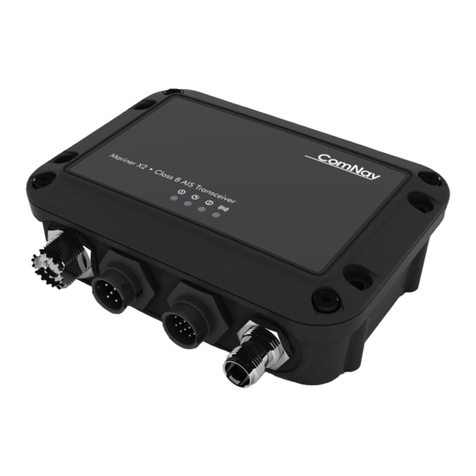1 Notices ..................................................................................................1
1.1 Safety warnings......................................................................................1
1.2 General notices ......................................................................................1
2 About your AIS class B transceiver ...................................................3
2.1 About AIS ...............................................................................................3
2.2 Static and dynamic vessel data..............................................................3
2.3 Important information for US customers.................................................4
2.4 What's in the box?..................................................................................5
3 Installation ............................................................................................7
3.1 Preparing for Installation ........................................................................7
3.2 Installation procedures...........................................................................9
4 Configuring your Mariner X2.............................................................15
4.1 Switching on your Mariner X2 for the first time.....................................15
4.2 Introduction to the proAIS software......................................................16
4.3 Installing the proAIS software...............................................................16
4.4 Configuration using proAIS ..................................................................17
5 Operation ............................................................................................19
5.1 Using the Mariner X2............................................................................19
5.2 Switch functions ...................................................................................19
5.3 Using proAIS with your Mariner X2......................................................20
5.4 Indicator functions................................................................................23
6 Troubleshooting.................................................................................24
7 Specifications.....................................................................................25
Figure 1 Items included in the product..................................................... 5
Figure 2 Mariner X2 overview..................................................................6
Figure 3 Electrical connections to the Mariner X2................................... 6
Figure 4 Typical installation configuration................................................ 7
Figure 5 Mariner X2 dimensions............................................................10
Figure 6 Mariner X2 mounting............................................................... 10
Figure 7 GPS antenna mounting........................................................... 11
Figure 8 Position of the GPS antenna connector .................................. 11
Figure 9 Position of the VHF antenna connector...................................12
Figure 10 Connecting an external switch.................................................12
Figure 11 Connecting to the NMEA0183 data port..................................13
Figure 12 Connecting the power supply.................................................. 14
Figure 13 Indicator start up sequence..................................................... 15
Figure 14 Entering static data into proAIS...............................................16
Figure 15 proAIS GPS status page .........................................................20
Figure 16 proAIS Diagnostics page......................................................... 21
Figure 17 proAIS Other vessels page...................................................... 21
Figure 18 proAIS Messages page........................................................... 22
Figure 19 proAIS Serial data page..........................................................22
Figure 20 Indicator location on the Mariner X2 unit................................. 23
Table of contents Table of figures




























